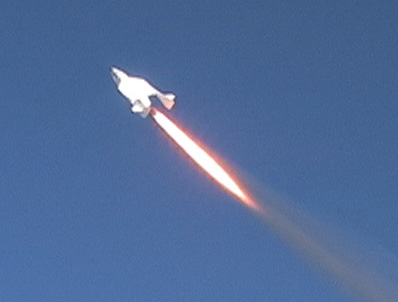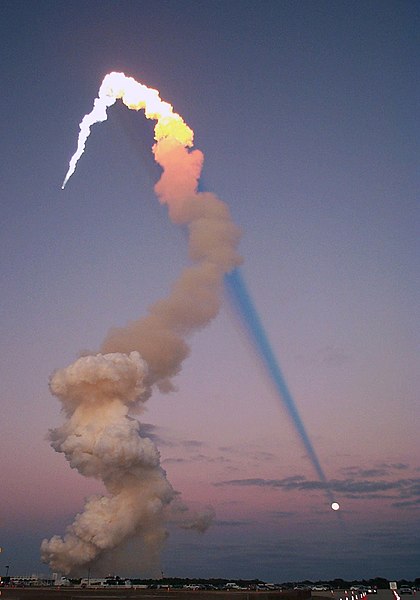

Right, yesterday I rewatched my Apollo 13 DVD and listened to the commentary of real-life astronaut and Apollo 13 commander Jim Lovell - moved and motivated by the film I started poking around the net looking for the current situation of various space-programmes.
In the first decade of the 20th Century, the Wright brothers made their flight at Kittyhawk. 60 years later, Armstrong walked on the moon.
Since then the quest for space has stagnated - no manned vehicle has left Earth's orbit since the 1970s - instead we have filled space with satelites and space-stations, the most recent of which - the ISS, seems to me like a white-elephant.
As for manned missions, they have been beset with tragedy - Challenger and Columbia reminded the world of the dangers of space-travel, and their surviving sisters Discovery, Atlantis and Endeavour are becomming obsolete (the onboard computer has 1Mb of memory space!) and nearing the end of their service life.
At one time it seemed the Soviet Union might be developing their own Shutlecraft, but due to funding and political restrictions their Buran shuttle only ever made one flight and was then mothballed - that said it was remarkable in that the entire misson, from take-off to orbit and landing was unmanned, performed by automated systems.
Buran was sadly destroyed in 2002 when her hanger collapsed, an event which also tragically killed 8 workers. Her sister - Ptichka, and three other Soviet shuttles never flew, being either dismantled or put on display, like the American prototype Shuttle Enterprise.
Recently NASA announced long-term plans to return to the moon and then move on to Mars - but their proposed craft of choice seems a step backwards - being identical in concept if not scale to the Saturn 5 rockets and Apollo capsules. Underfunded and beset by government red-tape, I'm not exactly hanging on tenderhooks for NASA's next development.
The new driving force in space travel is now coming from the private sector - Sir Richard Branson's Virgin Group has started a branch called Virgin Galactic - devoted to building small space-planes to take private citizens to space and back. The first flight is planned for 2007.
The actual space-craft are designed by Burt Rutan, an American engineer who built the first private manned space-craft. This machine, SpaceShipOne, flew two of Rutan's pilots to space and back in 2004 - a literal space-plane, SS1 is launched from a large carrier plane and requires no booster rockets or fuel-tanks to push the envelop of Earth Orbit.

SS1 beneath her carrier plane, White Knight

Fly me to the moon!

Looking down from SS1
Virgin Galactic hope to carry 500 passengers a year and 5 of Rutan's space-planes are now comissioned, the first two to be named Enterprise and Voyager. Those who have expressed an interest in being on the first flight include William Shatner and Sigourney Weaver. Tickets will be $200,000 - not a small amount by any means, but a vast step towards cheap and safe space tourism for all.
The first flights will be to suborbit levels where passengers will experience weightlessness and be able to see the entire planet, as well as space itself. If successful, Virgin Galactic and Rutan will build a next-generation spaceplane capable of orbital flight.
After 40 years of stagnation, it finally looks like mankind aspires to the Final Frontier - from here, where do we go next - and who among us will do it?

A picture nicknamed by NASA staff 'the finger of God' - the shadow cast by Atlantis' launch plume, points back towards the moon, as if an omen of NASA's return.





